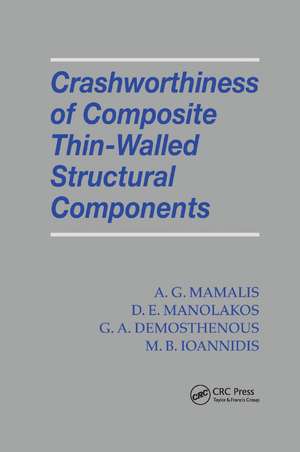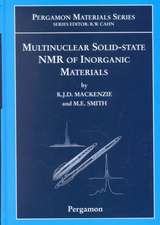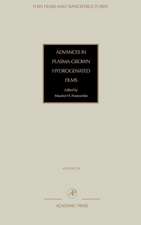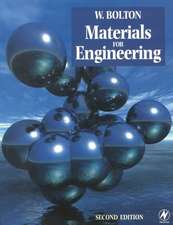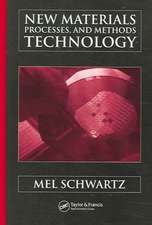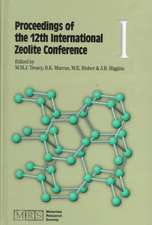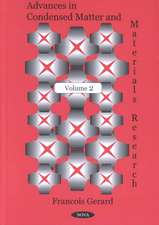Crashworthiness of Composite Thin-Walled Structures
Autor A.G. Mamalis, D. E. Manolakos, G. A. Demosthenous, M. B. Ioannidisen Limba Engleză Paperback – 27 sep 2019
Vehicle crashworthiness has been improving in recent years with attention mainly directed towards reducing the impact of the crash on the passengers. Effort has been spent in experimental research and in establishing safe theoretical design criteria on the mechanics of crumpling, providing to the engineers the ability to design vehicle structures so that the maximum amount of energy will dissipate while the material surrounding the passenger compartment is deformed, thus protecting the people inside.
During the last decade the attention given to crashworthiness and crash energy management has been centered on composite structures. The main advantages of fibre reinforced composite materials over more conventional isotropic materials, are the very high specific strengths and specific stiffness which can be achieved. Moreover, with composites, the designer can vary the type of fibre, matrix and fibre orientation to produce composites with proved material properties. Besides the perspective of reduced weight, design flexibility and low fabrication costs, composite materials offer a considerable potential for lightweight energy absorbing structures; these facts attract the attention of the automotive and aircraft industry owing to the increased use of composite materials in various applications, such as frame rails used in the apron construction of a car body and the subfloor of an aircraft, replacing the conventional materials used.
Our monograph is intended to provide an introduction to this relatively new topic of structural crashworthiness for professional engineers. It will introduce them to terms and concepts of it and acquaint them with some sources of literature about it. We believe that our survey constitutes a reasonably well-balanced synopsis of the topic.
Preț: 489.26 lei
Preț vechi: 575.60 lei
-15% Nou
Puncte Express: 734
Preț estimativ în valută:
93.62€ • 100.11$ • 78.06£
93.62€ • 100.11$ • 78.06£
Carte tipărită la comandă
Livrare economică 18 aprilie-02 mai
Preluare comenzi: 021 569.72.76
Specificații
ISBN-13: 9780367400354
ISBN-10: 0367400359
Pagini: 259
Dimensiuni: 156 x 234 x 14 mm
Greutate: 0.39 kg
Ediția:1
Editura: CRC Press
Colecția CRC Press
ISBN-10: 0367400359
Pagini: 259
Dimensiuni: 156 x 234 x 14 mm
Greutate: 0.39 kg
Ediția:1
Editura: CRC Press
Colecția CRC Press
Public țintă
ProfessionalCuprins
Preface Introduction Vehicle Crashworthiness 2.1 Aspects of Crashworthiness 2.2 Use of Composite Materials in Crashworthiness Applications Failure Mechanisms of Composites 3.1 Notation 3.2 Failure Modes 3.3 Failure under Several Loading Conditions 3.4 Material Testing 3.5 Failure Criteria 3.6 Numerical Simulation Energy Absorption Capability of Thin-Walled Composite Structural Components 4.1 Definition 4.2 Factors Affecting the Energy Absorption Capability 4.3 Failure Mechanisms/Mechanical Response 4.4 Predictive Techniques 4.5 Quantitative Data Circular Tubes 5.1 Notation 5.2 General 5.3 Axial Collapse: Static and Dynamic 5.4 Bending Square-Rectangular Tubes 6.1 Notation 6.2 General 6.3 Axial Collapse: Static and Dynamic 6.4 Bending Circular Frusta 7.1 Notation 7.2 General 7.3 Axial Collapse: Static and Dynamic Square Frusta 8.1 Notation 8.2 General 8.3 Axial Collapse: Static an Dynamic Automotive Sections 9.1 Notation 9.2 General 9.3 Axial Collapse: Static and Dynamic 9.4 Bending Classification of Macro- and Microfailure Modes and Quantitative Data 10.1 Common Defects in the Processing of Composite Materials 10.2 Common Defects in Loaded Composite Thin-Walled Structures References Subject Index Author Index
Notă biografică
Mamalis, A.G.; Manolakos, D. E.; Demosthenous, G. A.; Ioannidis, M. B.
Descriere
During the last decade much of the attention given to crashworthiness and crash energy management has centered on composite structures. Crashworthiness of Composite Thin-Walled Structural Components provides an in-depth, illustrated survey of both the technology and applications of this growing field. The authors introduce the concepts, terms and definitions of crashworthiness, discuss the failure mechanisms and energy absorption capability of composites in various geometries, and provides a full source of references.
